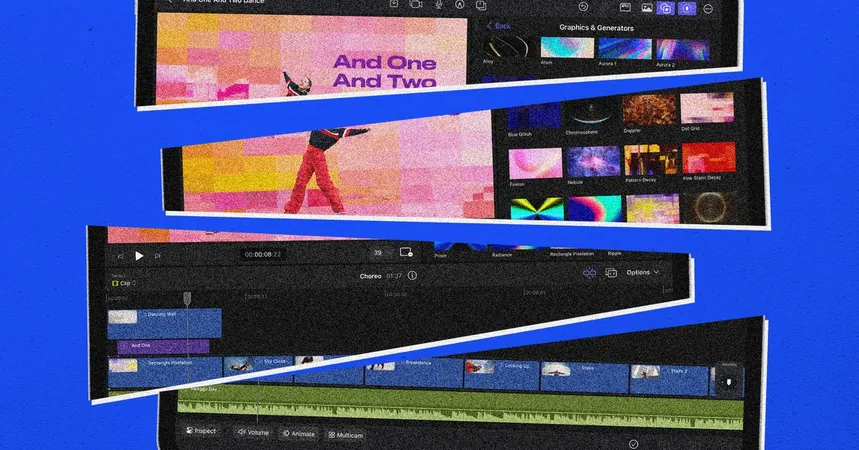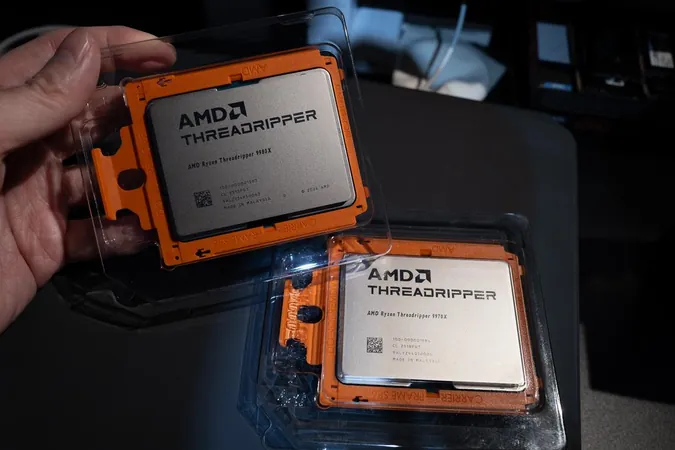
Apple's iPad Evolution: Goodbye to Jobs' Vision and Hello to Versatility!
2025-08-16
Author: Rajesh
The Shift from Sacrilege to Functionality
For years, Apple considered adding windowed functionality to the iPad as a sacrilege. However, with the introduction of iPadOS 26, today’s iPads are effectively transforming into touchscreen MacBooks—performing like computers while retaining their tablet roots. This radical shift has raised eyebrows and prompted questions: How did this transformation come to be, and what does it mean for the legacy of Steve Jobs?
The Birth of a New Device in 2010
When Steve Jobs unveiled the iPad in 2010, he presented it as a revolutionary 'third category' device, bridging the gap between smartphones and laptops. Jobs asserted that for this new device to justify its existence, it needed to excel at essential tasks like browsing, emailing, video playback, and more. At the time, the iPad lived up to this promise, dominating the media consumption landscape.
The Hints of Change
During the original launch, the iPad was presented as an intimate device—ideal for leisure and consumption rather than productivity. Jobs painted the iPad as a revolutionary tool, holding 'the internet in your hands.' Yet, whispers of dual-purpose functionality began surfacing when creators like Brushes' Steve Sprang suggested artists could thrive on the larger screen.
Expectations vs. Reality
While the iPad was visually stunning, users soon discovered it lacked critical tools for serious creatives. Jobs had famously dismissed the need for a stylus, claiming, "If you see a stylus, they blew it." But as users began to demand more complex functionalities, frustrations mounted. The absence of features like a file manager or true multitasking capabilities revealed the iPad’s limitations, resulting in a decline in initial sales momentum.
Caught Between Two Worlds
The iPad struggled to fill the void between smartphones and laptops. As mobile devices grew increasingly essential, the iPad became seen as an optional accessory rather than a must-have. While the original iPad boasted exceptional build quality that aged gracefully, users quickly found their needs evolving beyond mere media consumption.
The Pro and the Paradox of Progress
In response, Apple introduced the iPad Pro, packing significantly more power. However, the advanced features clashed with iPadOS’s simpler operating system, leaving many users in limbo. The Pro model went against Jobs' original vision while attempting to straddle the desires of both casual and power users—creating an identity crisis.
Complexity Over Clarity
As Apple pushed to redefine the iPad, tasks that once felt straightforward became layered with unnecessary complexity. The introduction of features like the magnetic keyboard and mouse support seemed confused and contradictory to the tablet ethos. Apple’s attempts to innovate often felt like missing the mark, especially with poorly-received updates like Stage Manager.
The Radical Transformation of iPadOS 26
Now, with iPadOS 26, Apple has fully embraced what it once rejected. The iPad has evolved into a fully-fledged multitasking device where windows can overlap, complete with an intuitive cursor and menu bar. While it may not fully replace a Mac, it certainly signifies the end of Jobs’ original focused vision.
The Ghost of Jobs Still Lingers
Interestingly, tucked away in iPadOS 26 is a nostalgic feature reminiscent of the early iPad ethos—a Full-Screen Apps option that strips multitasking back to its roots. Users can now toggle between the immersive singular focus of the original iPad and the robust productivity capabilities that professionals have long asked for.
Final Thoughts: A New Era for the iPad
In essence, the current iPad represents two devices in one: a consumer-friendly slate and a productivity powerhouse. The original spirit of Jobs’ creation may continue to exist in a hidden mode, but the notion of an elegantly simple third-category device has officially vanished. As Jobs once stated, "The bar is pretty high—we think we’ve done it." He did, but times—and user needs—have dramatically changed.



 Brasil (PT)
Brasil (PT)
 Canada (EN)
Canada (EN)
 Chile (ES)
Chile (ES)
 Česko (CS)
Česko (CS)
 대한민국 (KO)
대한민국 (KO)
 España (ES)
España (ES)
 France (FR)
France (FR)
 Hong Kong (EN)
Hong Kong (EN)
 Italia (IT)
Italia (IT)
 日本 (JA)
日本 (JA)
 Magyarország (HU)
Magyarország (HU)
 Norge (NO)
Norge (NO)
 Polska (PL)
Polska (PL)
 Schweiz (DE)
Schweiz (DE)
 Singapore (EN)
Singapore (EN)
 Sverige (SV)
Sverige (SV)
 Suomi (FI)
Suomi (FI)
 Türkiye (TR)
Türkiye (TR)
 الإمارات العربية المتحدة (AR)
الإمارات العربية المتحدة (AR)